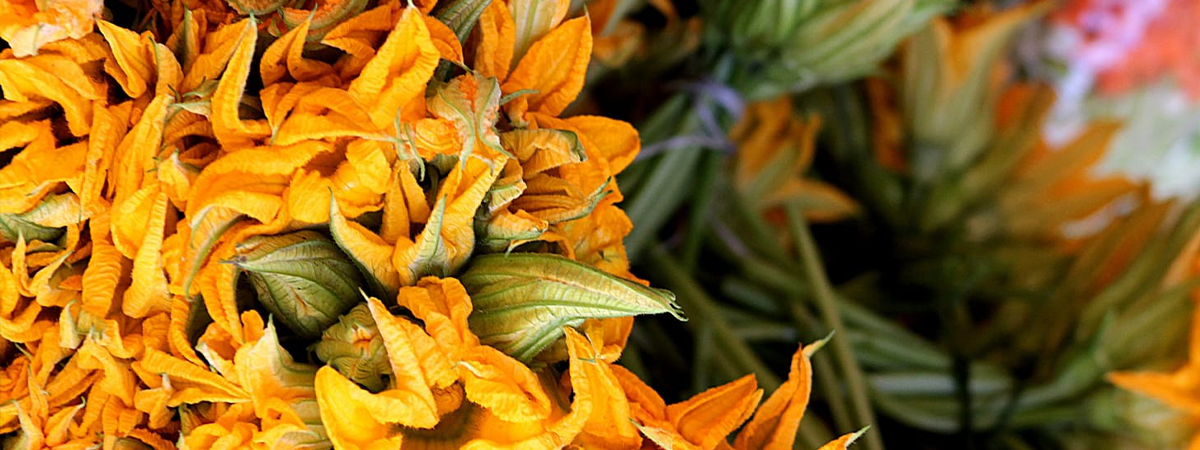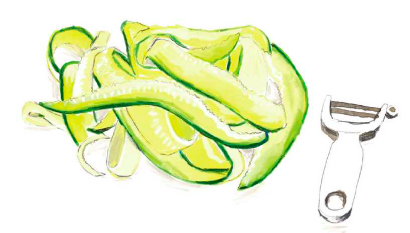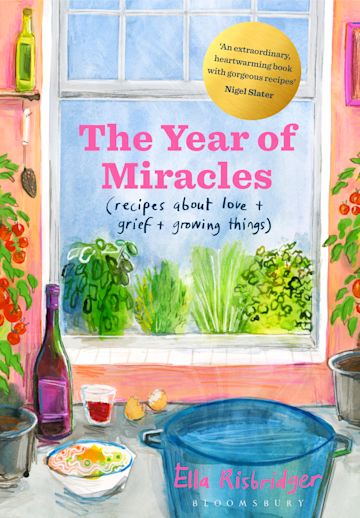
July, and I don’t remember the last time we ate indoors. We eat on the balcony, on our folded old curtain, overlooking the garden. And it is undeniably a garden. There’s no elegant hedging, no lawn, no fruit trees. No trees at all. But there is green everywhere, and everything in fruit, and Mitski the cat, and foxes.
I love the foxes: a glossy butch of a vixen, a sleek dog-fox with brush held high. South London foxes are superior in quality to East London foxes. They feel more alive, somehow; less like scavengers, and more like beings independent of ourselves. Which isn’t to say they don’t scavenge. They do. They scavenge, and they dig. My particular favorite—the dog-fox who comes most often to our garden—dug up a dozen baby courgettes the day after I planted them; I saw him from my window, standing triumphant over the damp earth. I am not sure he saw me, but I like to think so. We have stars here; stars and foxes and courgettes.
The joy and the horror of courgettes or zucchini (lovely word) is that they are very easy to grow. And keep growing. And keep growing and growing and growing. Ours are in black canvas bags against the garden wall, and every day there are more of them.
The joy and the horror of courgettes or zucchini (lovely word) is that they are very easy to grow.On our fourth courgette of the season, each as big as a baby’s arm, Jo says: “Just how many more of these things are you planning to grow? Just so I know?”
“Some,” I say. We look at the courgettes: the courgette on the plates, and the courgettes in the garden, under the courgette flowers, where more courgettes are even now threatening to emerge. “Some.”
“Hmm,” she says. “Hmm.”
I decide to become much more inventive.
I don’t think I am a particularly inspired vegetable cook; I have—or have had, up until this summer—merely a small repertoire of tried-and-tested green sides. I like to tick the box marked Health. I like to be sure we’re eating five a day, like children. I buy broccoli and frozen peas. I buy cherry tomatoes and cucumber. Occasionally I buy a lettuce. A bag of salad. Frozen spinach. You know? The vegetables you buy when you have to eat a vegetable. Vegetables, as widely and cheaply available in city supermarkets, are mostly just ok. There is an argument to be made, I think, that most fresh food from supermarkets is just ok. It’s fine. It is a perfectly fine source of the calories we need to survive, and there is nothing wrong with survival. For a long time, I thought survival was the main thing.
In my new book, The Year of Miracles: Recipes About Love & Grief & Growing Things is a rebellion against going through things; it’s about stopping and looking at things; about making everything really good all the time. There’s this weird perception out there that if everything is a treat, nothing is, and it’s so deeply puritan it knocks me out.
I want everything, all the time. I want it all to be the best possible version of itself; I want everything to taste of itself but better; I want more and more, and then more of it. I want to live. Which means, of course, that there has to be something worth living for.
There’s this weird perception out there that if everything is a treat, nothing is, and it’s so deeply puritan it knocks me out.And that, right now, is this. It’s my people, the ones who can walk to our house, and the ones on the other side of town, and the ones on the other side of the world: my godchildren, my sisters, my friends, my family; this new person who wants to know me, maybe lots of new people who want to know me, maybe a world full of them; my best friends and my Jo. Mitski the next-door cat. A gold bikini. Iced water. Cold Coke. Babybels. Big books.
And most of all, this: this garden, this ten-slabs-by-ten-slabs square of concrete just off an arterial road; and eating in it, an old teal curtain spread out across the peeling iron of the fire-escape steps, beads of condensation pricked out like constellations across the cold bottle of wine, a pitta bread—hot and tactile—jammed with pea shoots and rocket and butter beans; and boiled beetroot basted with balsamic; and charred courgette, squashy with oil, dredged in salt and tangy citric acid.
I grew the beetroot, and the pea sprouts. You already know about the courgettes. There are three more on the courgette plant as I write; I can see them through the window. Their flowers are the exact sunshine shade of a yellow linen skirt I once owned as a teenager in France.
I’m kind of worried about the soil beneath the flowers and the broad leaves: I think it needs more organic matter to hold the water longer. I worry about soil now. I think a lot about growing things, and the way we grow things; I think about water tables and sun direction and soil biodiversity; and I think about things that are alive, and being alive, and being alive like a fox and like a courgette and like a star—one thing among many, one thing in the order of things.
It helps, I find, with keeping a sense of perspective.
And so I sit back on my heels, and think about courgettes.

Each courgette recipe here makes enough, roughly, as a component for 4 lunches for me; or a side for 4 people.
Courgette in Ribbons
Courgette, sliced into long ribbons with a potato peeler, and tossed in a bowl with lemon juice and olive oil, and huge fistfuls of torn basil, and sea salt; and then—here’s the masterstroke—a vast quantity of Parmesan, powdered to nothing in a food processor, shaken over the top. There should be, like, a cloud of Parmesan. This is a Parmesan party, and we’re all invited.
The quantities for this are sort of variable. How green is your oil? How enormous is your courgette? What salt are you using, and what sort is your lemon? But the idea is worth telling you about, anyway. This is not the most original of recipes, but it is absolutely failsafe, and deeply fancy.

Courgettes, Roasted
Every vegetable tastes better like this: that is just a fact.
I have done it with courgettes because I have a million courgettes; but also I do this with courgettes because they can be, if you treat them carelessly, rather tasteless. Courgettes want to soak up a flavor; they want to be whatever you want them to be.
In this case, what they are soaking up is salt, olive oil, and citric acid. Don’t panic. You can buy citric acid online, or in a Turkish supermarket under the name of “lemon salt.” With some vegetables, you’re fine to use lemon juice—and if you can’t get citric acid, you could use it here, too—but with courgettes, you want them as dry as possible, so they go as crispy-sticky-tender as possible. That’s why we use the citric acid, to eliminate the water element of the lemon; and plus, I like using citric acid in things. I like how much of a mad scientist I feel. I like that it doesn’t go bad; I like that it keeps forever, a hit of acid to keep you ticking over.
Basically every vegetable, given oil and salt and acid, will be delicious roasted in a stupidly hot oven: they become intensely snackable, the edges crisp, yielding to sticky-chewy where they stuck to the baking tray, yielding again to tender in the center.
I love anything burnt; I love the blisters on the skin, the black edges, the way the flesh soaks up the gold of the oil. I find them almost addictively good.
*
500g courgettes
2 tbsp olive oil
2 tsp citric acid
1 tbsp flaky sea salt
*
Chop the courgettes unevenly, into rough and exciting chunks: some diagonal, some slices, some quarters. This is for texture.
Pre-heat the oven to 200°C. Scatter the courgettes on a large baking tray. Drizzle with the olive oil, scatter over the citric acid and salt.Shake, bake, and roast for 25 minutes or until completely irresistibly jammy and charred.

Courgettes with Chimichurri
This is, I suppose, like the sophisticated, slower version of the roast courgettes above. You’re using the same tricks—smoke, salt, acid, oil—but making it fancy: making it something you could serve to guests cheerfully; something you could spend a little time, on a Saturday afternoon in high summer, chopping and tasting and preparing. There’s something lovely about treating vegetables the way you might, once, have treated meat: as the star of the show, with care, with dazzle.
Chimichurri is an Argentinian sauce, kind of like a salsa verde but different: chopped red chili, red wine vinegar, parsley, garlic and olive oil. Slick and sharp, it’s usually paired with something smoky and griddled (steak, say—or in this case, courgette).
It seemed to me a natural pairing. I was thinking about zucchine alla scapece—which is cold courgettes, marinated in oil, white vinegar and mint; and I was also thinking about chimichurri, and the answer seemed very clear. Thick slices of courgette seared in a hot griddle pan, then tossed and marinated in a (kind of) chimichurri.
I say “kind of” because I have never been to Argentina, I am not Argentinian, and I am 100 percent certain this is not how they do it there. This is sort of like the chimichurri I have eaten in Argentinian restaurants, and based on reading a lot of recipes for chimichurri, and thinking about it a lot, but there’s almost certainly nothing authentic about it. I keep thinking about authenticity: about how there’s so little that’s authentic about anything, in my book, because I am not a very authentic cook.
I am a scavenger, a city-shaped try-hard who buys things and then Googles to find ways to use them up; the kind of person who buys cookbooks on a whim about places I’ve never been, just to see what they’re like, and then forgets to follow half of the steps in the recipes. I would love to be the kind of diligent cook who can make a thing exactly as instructed, but I’m not: I’m an idiot. A happy idiot, who sometimes puts mint in her chimichurri courgettes, and you know what? I don’t regret it at all.
I do make my chimichurri by hand, though, and not in a food processor, because the texture is so different. You don’t want a smooth paste, here, but beautiful, jewel-like flecks of gold and green and red, suspended in the green-gold oil, the tiny pearls of vinegar.
*
500 g courgettes
For the chimichurri
2 garlic cloves
A couple of pinches of flaky sea salt
2 tbsp chili flakes
20ml olive oil
10ml red wine vinegar
Small bunch of coriander
Small bunch of flat-lead parsley
Few sprigs of mint
*
Slice the courgettes into thick rounds, splash with olive oil and toss into a griddle pan over a high heat. Let them cook for 3 minutes on each side. They should blacken in pleasing little stripes, and when they are stripy on both sides—and tender to a fork—you can turn the heat off, yank them out and ignore them.
Ignore them. This recipe is all about the chimichurri—and yet it is, I’m afraid, only an approximation of a recipe. I can give you quantities, but you’re going to have to get in there and taste. Do I like it? Do I want more oil, more vinegar, more salt, more chili? You have to add each thing little by little: one garlic clove, one pinch of chili, a splash of vinegar. I can’t tell you how you like this, I can only tell you how to know what you like—and the only way to know is to try it, and to do it.
Take your pestle and mortar, and pound your garlic to a paste. Add a tiny pinch of salt, to help grind it down. Add half your chili flakes, and pound them, too. Add a little oil and a little vinegar.
Add a few leaves of coriander, a few of parsley, a few of mint, and another pinch of salt to help grind them down into a condiment. It will come, I promise. Keep adding; keep pounding.
At this point you can start tasting. Would you, personally, like a splash more sourness? A little kick? If you don’t know, just try it. It doesn’t matter. See what you like, and whether you like it more like this, or like that. Just try it. Keep trying. I believe in you.
Dress the warm courgettes in the chimichurri: eat now, eat later. Both are great.
___________________________________
The Year of Miracles by Ella Risbridger is available from Bloomsbury

